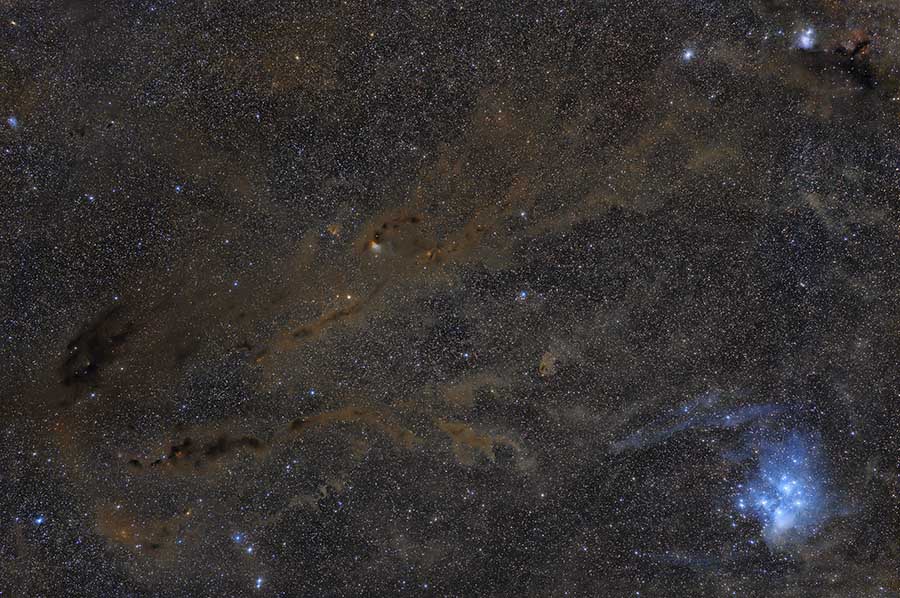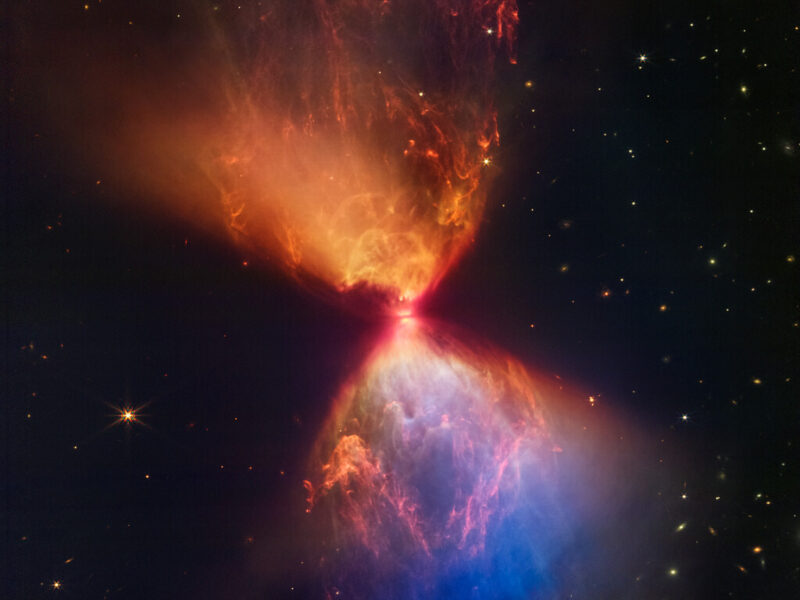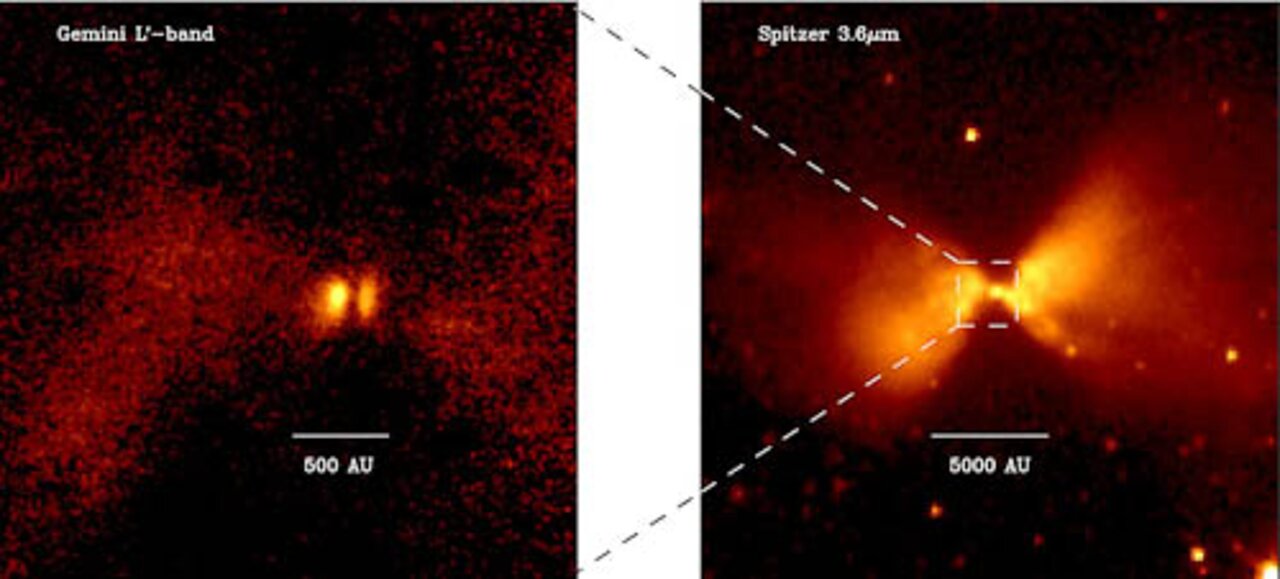Starbirth is dark at visible wavelengths, but the James Webb Space Telescope sees a riot of colors from the warm glow of a feeding infant star.

At visible wavelengths, the Taurus Molecular Cloud looks like a dark hole in the sky. The dark nebula of dust and gas, some 450 light-years away to the north of Aldebaran and east of the Pleiades. The dust here is so thick, it blocks the light of the background Milky Way.

But longer wavelengths have pierced that veil to tell a different story. Here is a bustling stellar nursery, one of the nearest to Earth, that’s home to at least 250 infant stars. Now, the James Webb Space Telescope has turned its infrared eyes on one of these protostars, designated L1527, revealing a rainbow of color and detail as we’ve never seen it before.

At the center is the not-yet-star, a hot blob of gas that’s only 20% to 40% the Sun’s mass, and thus not yet massive enough to have begun fusion in its core. It is, after all, only about 100,000 years old. It’s still feeding thickly on the cloud around it, which funnels gas and dust into an accretion disk that’s clearly visible as a dark line across the middle of the image. That line is a few hundred astronomical units long, about the size of our solar system. Any planets that might form around this star will still take tens of millions of years to grow.

But as any infant would do, this star doesn’t just feed — it also burps. Those ejections of mass appear as bubble-like shapes in the gas flowing outward above the disk, illuminated by the protostar’s warm glow.
That they’re visible at all is because of previous outflows from the protostar, which cleared out gas and dust above and below the disk. The star’s light suffuses these emptied regions. But dust still veils our view of this region, just some regions less than others. Blue areas have less dust in front of them; light that must traverse more dust on the way to Earth appears orange, “reddening” in the same way a sunset does.

This view represents a look back in time at a star very like our Sun just after it was born.